Predictions & Data for this entry
| Model: abj | climate: MC | migrate: | phylum: |
| COMPLETE = 2.8 | ecozone: MPW | food: biPz | class: |
| MRE = 0.291 | habitat: 0iMp | gender: Hh | order: |
| SMSE = 0.130 | embryo: Mp | reprod: O | family: |
Zero-variate data
| Data | Observed | Predicted | (RE) | Unit | Description | Reference |
|---|---|---|---|---|---|---|
| am | 90 | 89.84 | (0.001828) | d | life span | guess |
| Lj | 1.5 | 1.604 | (0.06926) | cm | total length at metam | KasuIshi2002 |
| Lp | 2 | 1.604 | (0.198) | cm | total length at puberty | KasuIshi2002, KasuIshi2008 |
| Li | 12 | 9.449 | (0.2126) | cm | ultimate total length | KasuIshi2002 |
| WC0 | 0.57 | 0.66 | (0.158) | mug | carbon weight of egg | KasuIshi2008 |
| WN0 | 0.15 | 0.1155 | (0.2299) | mug | nitrogen weight of egg | KasuIshi2008 |
| Wwb | 0.0018 | 0.0001119 | (0.9378) | g | wet weight at birth | KasuIshi2008 |
| Wwp | 1.7 | 6.668 | (2.922) | g | wet weight at puberty | KasuIshi2008 |
| Wdi | 2 | 2.012 | (0.005801) | g | ultimate dry weight | KasuIshi2000a |
| R65 | 2550 | 3269 | (0.2818) | #/d | reprod rate at 65mm | KasuIshi2008 |
Uni- and bivariate data
| Data | Figure | Independent variable | Dependent variable | (RE) | Reference |
|---|---|---|---|---|---|
| tL24 | 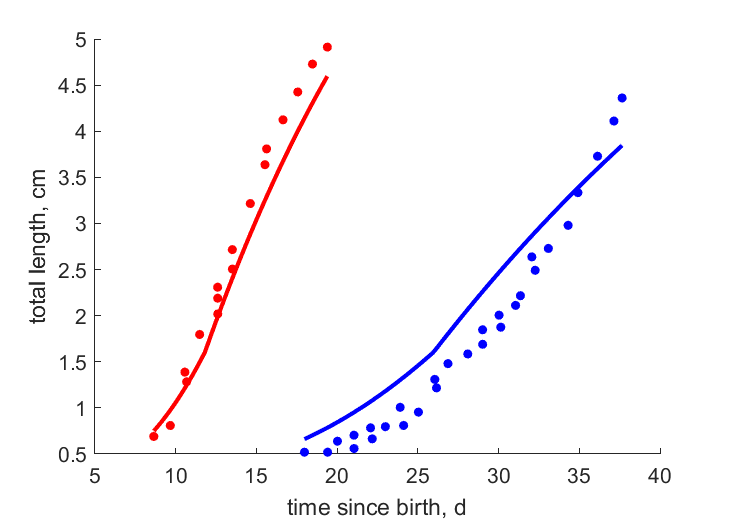 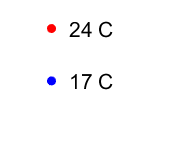 | time since birth | total length | (0.09774) | KasuIshi2002 |
| tL17 |   | time since birth | total length | (0.2069) | KasuIshi2002 |
| LWd | 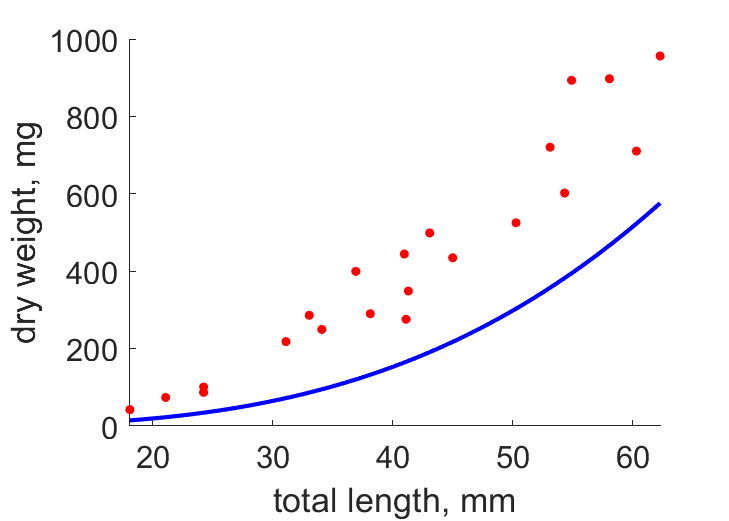 | total length | dry weight | (0.5012) | KasuIshi2000a |
| LWw | 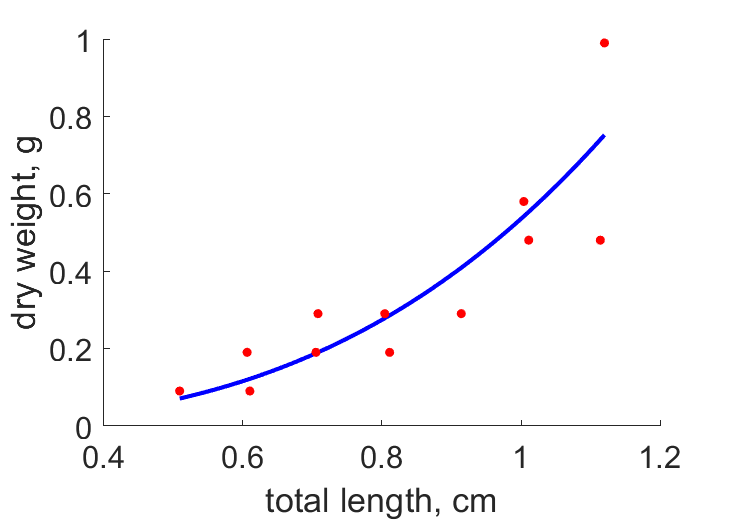 | total length | dry weight | (0.2553) | KasuIshi2000a |
| TR | 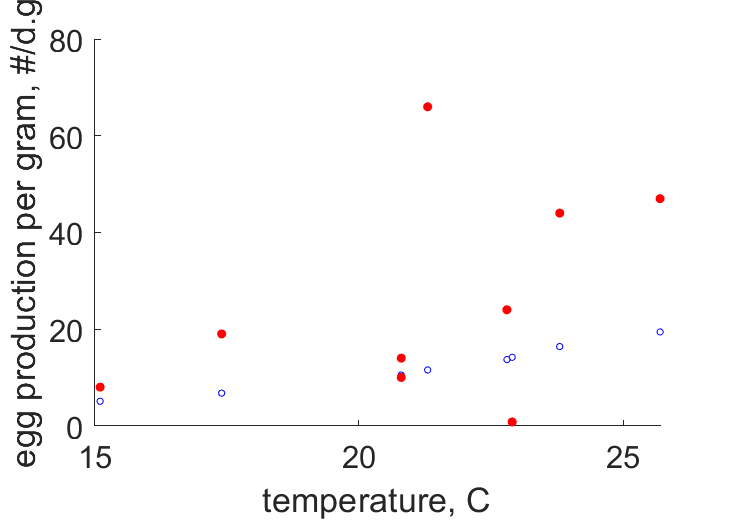 | temperature | egg production per gram | (0.4649) | KasuIshi2008 |
| WdJN | 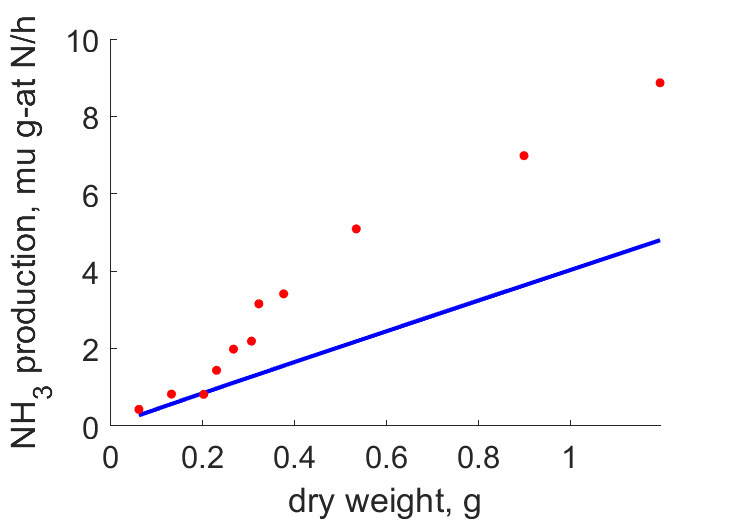 | dry weight | NH_3 production | (0.475) | KasuIshi2000a |
| WdJO | 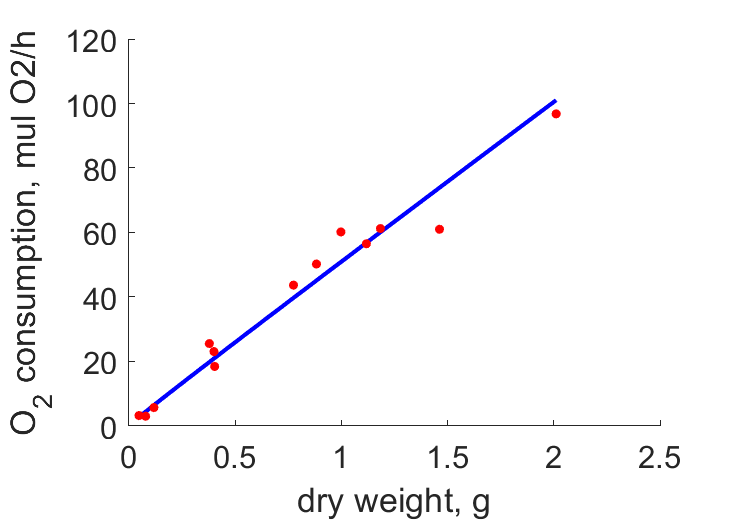 | dry weight | O_2 consumption | (0.09858) | KasuIshi2000a |
Pseudo-data at Tref = 20°C
| Data | Generalised animal | Bolinopsis mikado | Unit | Description |
|---|---|---|---|---|
| v | 0.02 | 0.03664 | cm/d | energy conductance |
| p_M | 18 | 91.95 | J/d.cm^3 | vol-spec som maint |
| k_J | 0.002 | 0.002 | 1/d | maturity maint rate coefficient |
| k | 0.3 | 0.005829 | - | maintenance ratio |
| kap | 0.8 | 0.9891 | - | allocation fraction to soma |
| kap_G | 0.8 | 0.7807 | - | growth efficiency |
| kap_R | 0.95 | 0.475 | - | reproduction efficiency |
Discussion
- Chemical pars are assumed to relate to ash-free dry mass; MaleFaga1993 report ash free dry mass over dry mass ratio of 0.263 - 0.297 with mean 0.279, which makes del_W = 3.5842
- mod_1: tL data added to determine growth; the low respiration and excretion is incompatible with the high growth; predicted fluxes have been divided by 1e3 to match observations
Facts
- After hatching _B. mikado_ passes through a cydippid larva stage with a pair of tentacles (Ref: KasuIshi2000a)
- B. mikado loses its tentacles at a total length (TL) of ca. 15 mm, becoming similar to the adult morphology (Ref: KasuIshi2000b)
- In Japanese coastal waters, B. mikado is the predominant ctenophore species and is most abundant from late summer to mid-fall in Tokyo Bay (Ref: KasuIshi2008)
- The Total length (TL) of larval B. mikado is considered the length from the aboral pole to the mouth; For larvae with developing oral lobes and for the post-larvae, TL is the length from the aboral pole to the end of the lobes (Ref: KasuIshi2002)
- The ammonia and phosphate excreted by B. mikado population might represent around 21% of the standing stock of nutrient in the seawater of Tokyo Bay (Ref: KasuIshi2000a)
- Hermaphrodite (Ref: Wiki)
Bibliography